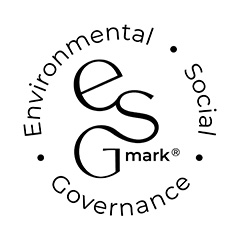What tax reliefs are available for renovation expenditure on commercial property?
As the UK continues to adapt to life in the wake of the pandemic, many businesses are still adjusting to new working practices and are changing their workspaces accordingly.
There has been a seismic shift in the way we work, with more people working from home than ever before, whether that be full-time or as part of a home/office hybrid-basis.
This has caused some businesses to think about downsizing or renovating their office space (or possibly both) to tempt staff back in. A smart, modern office can be a space where staff are able to work efficiently and collaboratively, away from the demands and noises of home life, creating a place they want to spend time in, and it can also provide a competitive edge when recruiting new staff and clients.
Other businesses and landlords are contemplating changing the way their properties are used altogether. In London, for example, an initiative is being considered whereby businesses renovating empty office buildings may be able to jump to the front of the planning permission queue if they change its use into a hotel or leisure facilities.
Of course, property renovation work can be very expensive. At a time of high inflation and a cost-of-living crisis, businesses will want to maximise any tax reliefs available and reduce their costs more than ever.
Fortunately, there are many types of tax relief available to businesses incurring renovation expenditure. This article explores the ways in which that relief could potentially be claimed where the refurbishment work takes place either in their own property, or part- way through a leased property. For information about the tax treatment of special payments linked to the termination or inception of a lease please read our article When one lease ends and another begins – Dilapidation, Inducements, and VAT implications .
Different kinds of expenditure qualify for different types of tax relief. The first step is knowing whether you have a ‘repair’ or ‘capital’ expenditure.
Repairs to existing assets
What tax relief is available for repairs?
Repairs are given 100% tax relief in the year of expenditure.
What is a ‘repair’?
A repair can be expenditure on almost any kind of asset, but must be incurred on an asset already held by the business. A ‘repair’ takes place when there is no significant improvement in the asset afterwards and will essentially restore an asset to its original state. In some circumstances it is possible to replace an asset with its modern equivalent and for that expenditure to still qualify as a repair.
Typical types of expenditure that will normally qualify as a repair are:
- replacing old single glazed windows with modern UPVC or double-glazed windows
- replacing roof tiles, provided there is no increase in the size or area of the roof
- redecorating costs.
- repairing damage caused by general wear and tear.
Capital expenditure on new assets
New assets purchased by a business are generally treated as ‘capital’ items. Tax relief is usually provided by means of claiming capital allowances. The type of capital allowance available depends on the type of asset acquired. These are considered in turn below.
‘Plant and machinery’
What is plant and machinery?
This is a generic term covering many types of assets, including but not limited to:
- computer equipment/ systems and installation costs
- desks, chairs, cupboards, blinds and other types of moveable furniture/ fittings
- security and surveillance systems
- fire alarms and sprinkler systems
- signage
- kitchen and bathroom equipment and fittings (such as sinks, dishwashers, cupboards, hand- dryers etc)
- assets to enhance the ambience of certain businesses- such as low-level lighting and decorative items in hotels and leisure facilities.
What types of capital allowances are available for plant and machinery expenditure?
Usually, a business will be able to claim full relief for plant and machinery expenditure in the year of purchase.
The Annual Investment Allowance (AIA) provides 100% tax relief on expenditure of up to £1m per year. The £1m limit covers all types of assets claiming the AIA, whether they be ‘plant and machinery’ or another kind.
Alternatively, a 100% First Year Allowance known as ‘Full Expensing’ can be claimed by companies (but not by unincorporated businesses). Unlike the AIA, this has no expenditure cap and so is particularly useful where costs exceed £1m. However, this allowance will end in March 2026 and various restrictions apply (for example to second hand assets). Please see our article which explores Full Expensing in more detail and explains its interaction with the AIA, What is Full Expensing and when should you claim it?
In the increasingly rare situations when neither the AIA nor Full Expensing is available, a capital ‘writing down allowance’ of 18% can be claimed each year on a reducing balance basis. Relying solely on this allowance would take businesses much longer to achieve full 100% relief for such costs. Nevertheless, roughly 55% relief would be being achieved within four years rising to 70% within six years, although the speed of deduction slows considerably thereafter due to the reducing balance nature of this allowance.
Integral features
What are integral features?
These are assets specifically defined by the legislation, which do not fall within the definition of ‘plant and machinery’ above.
Typical types of integral features commonly found in commercial buildings are:
- electrical and lighting systems
- hot and cold water systems
- air ventilation/ conditioning systems
- lifts and escalators
- solar panels.
What types of capital allowances are available for integral features?
The AIA can be claimed, thereby providing 100% relief for integral features in the year of acquisition. This is subject to the overall £1m total annual expenditure cap noted above.
A 50% First Year Allowance is also currently available, providing tax relief at 50% in the year of acquisition. Generally, this should be claimed if the AIA is not available.
A 6% ‘writing down allowance’ can be claimed on any remaining expenditure, on a reducing balance basis. Although this is a much slower rate of relief, the availability of the AIA and the 50% First Year Allowance should mean that most integral features expenditure receives between 50% to 100% tax relief in the year of purchase.
Expenditure on the structure of a building
What are ‘structural buildings’ expenses?
These are construction costs incurred in building, buying or leasing commercial buildings, including:
- design fees
- preparing the site for construction
- construction works
- renovation and conversion costs
- fitting out works which are neither ‘plant and machinery’ nor ‘integral features’ (and so relief would not otherwise be available).
What types of capital allowances are available for structural buildings costs?
A ‘structural buildings allowance’ (SBA) of 3% per year can be claimed, on a straight line basis. This means it takes around 33 years to claim full tax relief for the expenditure.
Whilst this is clearly far less generous than the AIA or Full Expensing, structural buildings costs were afforded no capital allowances relief at all prior to the introduction of the SBA rules in 2018. The 3% allowance is therefore a welcome step forward.
However, only expenditure incurred in connection with construction contracts signed on or after 29 October 2018 qualifies for the allowance. Other restrictions also apply- for example businesses must not carry on an excluded activity.
Energy efficient assets
What are energy efficient assets?
For capital allowance purposes these are certain types of energy saving equipment such as water efficient plant, refrigeration equipment and pipe insulation. However only specific makes and models will qualify for energy efficient allowances. These are set out in ‘green technology’ lists published by the government.
What types of capital allowances are available for energy efficient assets?
A 100% capital allowance is available for qualifying assets. This is a separate type of capital allowance from the AIA and does not ‘eat into’ the £1m cap mentioned above.
Expenditure in Enterprise Zones
A separate 100% First Year Allowance can be claimed on certain plant and machinery in ‘designated assistance areas’ of ‘Enterprise Zones’. However, this is restricted to disadvantaged areas specified by the government and so has limited scope.
Land Remediation Relief
Companies can claim this relief for the following types of expenditure:
- asbestos removal
- removal of harmful organisms such as Japanese knotweed
- remediation of contaminated land.
This is a valuable relief for owner occupiers, who are able to claim 150% relief for these costs (whereas developers can claim 50%). Loss making companies can also claim a 24% tax credit cash repayment if conditions are met.
Summary
Fortunately, most types of commercial property renovation expenditure qualify for tax relief at the present time. The reliefs are, on the whole, wide-reaching and more generous than they have been in the recent past. The government is clearly trying to encourage businesses to invest in this way.
Of course, we cannot be certain how long all these reliefs will be available in their current form. Whilst there is no immediate threat, the scope and speed of capital allowances relief is often subject to change depending on the political climate. With the prospect of a general election in 2024 and a potential change of administration, further changes could be on the horizon.
If businesses can find the extra cash to invest in their properties now, they could potentially reap the benefits of a generous tax allowances system whilst it is still in place. Knowing which type of relief to claim and how best to maximise that claim will be key.
If you are planning a commercial property refurbishment and would like to know what capital allowances and tax reliefs could be available, please get in touch.
If you have any questions about the above, or would like more information specific to your circumstances, please enter your email address below and we will get in touch:
















